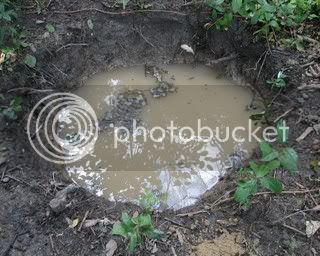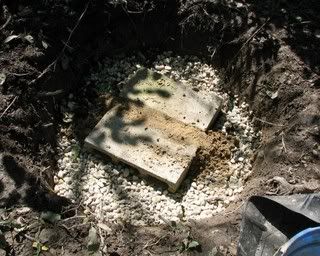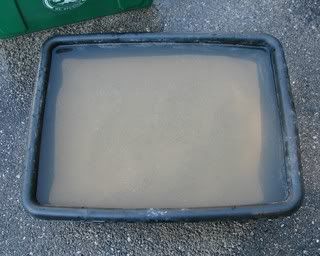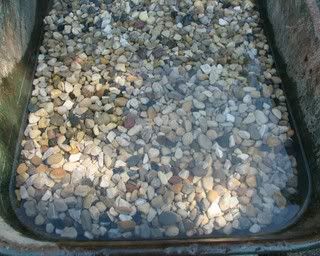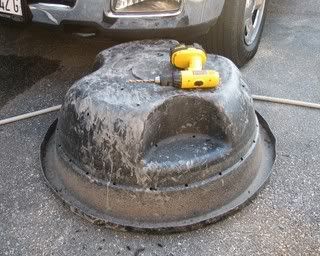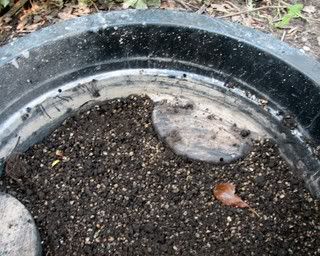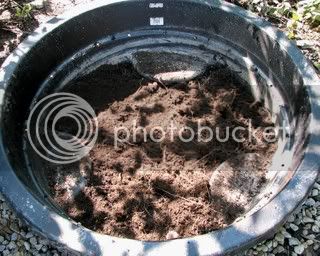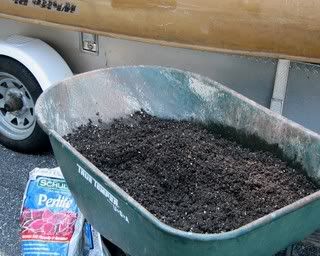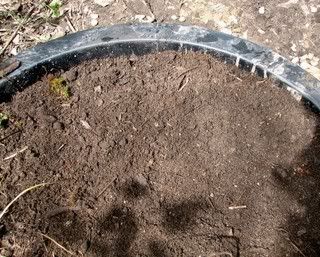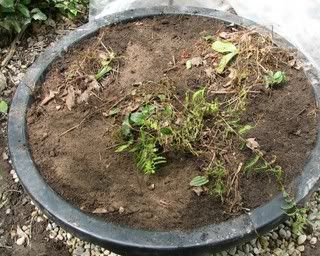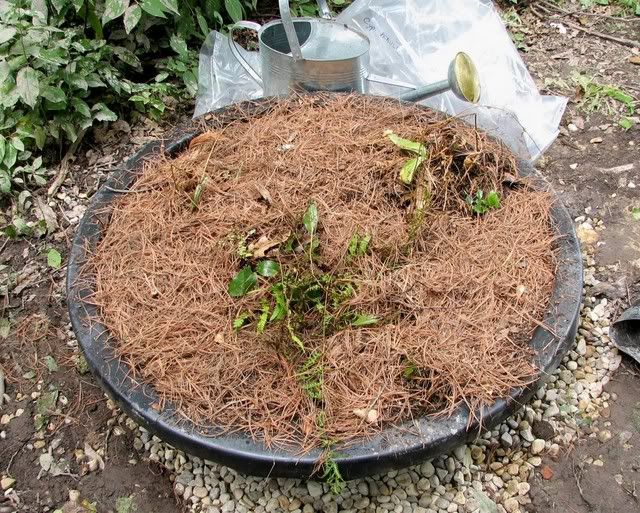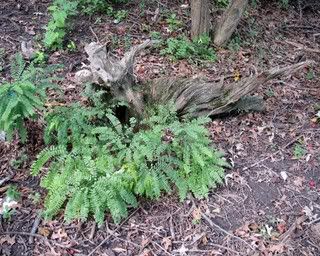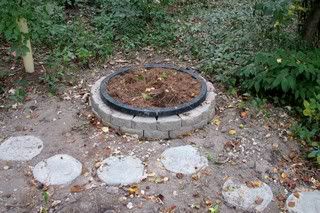Here's parvi's layer of pine needles and duff that I collected from up north. I have more set aside.
Total for the preform was about 37 gallons not the 34 stated on the label when the preform was given to me. That pre-form is 8" above grade. I know it doesn't look like it from the angle I took the photo but it is raised up and out of the ground.
I've done my homework and gotten help and advice from the best of the best so I hope these plants live. I've spent from dawn to dusk for the past few days preparing the area for these plants based on all I have learned and in consideration of my site and I've done my best. My best may not be good enough. I am tired, my body is sore from hauling material around in the wheelbarrel back and forth to the site, and I feel like doing a face plant right about now. I've probably sweated off a gazillion pounds. I am the dark horse I guess which is why I had only wanted one of these plants to start with not four and even then I wanted to put off trying one of these because they are too touchy and nobody seems to be able to get them to live beyond 3 years other than parvi.
I treated myself to the purchase of two parviflorum that will be delivered this fall. I figure those won't fail me and at least if my acaule die (odds are not with mine living based on everything I've read), I'll have the two parviflorums to look forward to blooming next spring as well as the two ariatium I ordered a bit ago for delivery next spring. Then if my acaule die, parvi can maybe work with me and tweak what I did based on my above photo documentation of the process so I can try acaule again and again until I get it right. Here's the big problem- My friend who gave them to me as a gift stated there were more where those came from and that if I don't take them and keep trying to grow them, they'll just be left to be bulldozed. He's got some sort of a permit to remove the plants before the widening of the road starts and his group was just granted a one year extension to go back in and get more plants. I guess the construction company and all of its sub contractors is not happy with his conservation group- oh well. These plants mean a lot to them. I didn't know that. They want me to try my best to get them to live to preserve the genotype. That's why they gave me four not one. That's why they have given these plants to other personal friends to try their best so that somebody may have success. Great, I'll feel even worse if something happens to them. I'm going to stake chicken wire around them so deer don't eat them next and maybe I better drape some fruit tree netting over them so squirrels don't scale the chicken wire to bury their nuts and acorns in there. That's all I need is a squirrel uprooting one of those plants while I'm out and about.
parvi, if you see anything I could do better, please let me know. I have no problems digging everything up to get to a layer that might need to be tweaked. It's ok if I did something wrong, just let me know so I can correct it to the best of my ability.
Here's the area I scoped out to plant the parviflorum (my treat to myself for getting the acaule in the ground) based on my readings and seeing where they grow in the wild which quite frequently is with maiden hair ferns.
